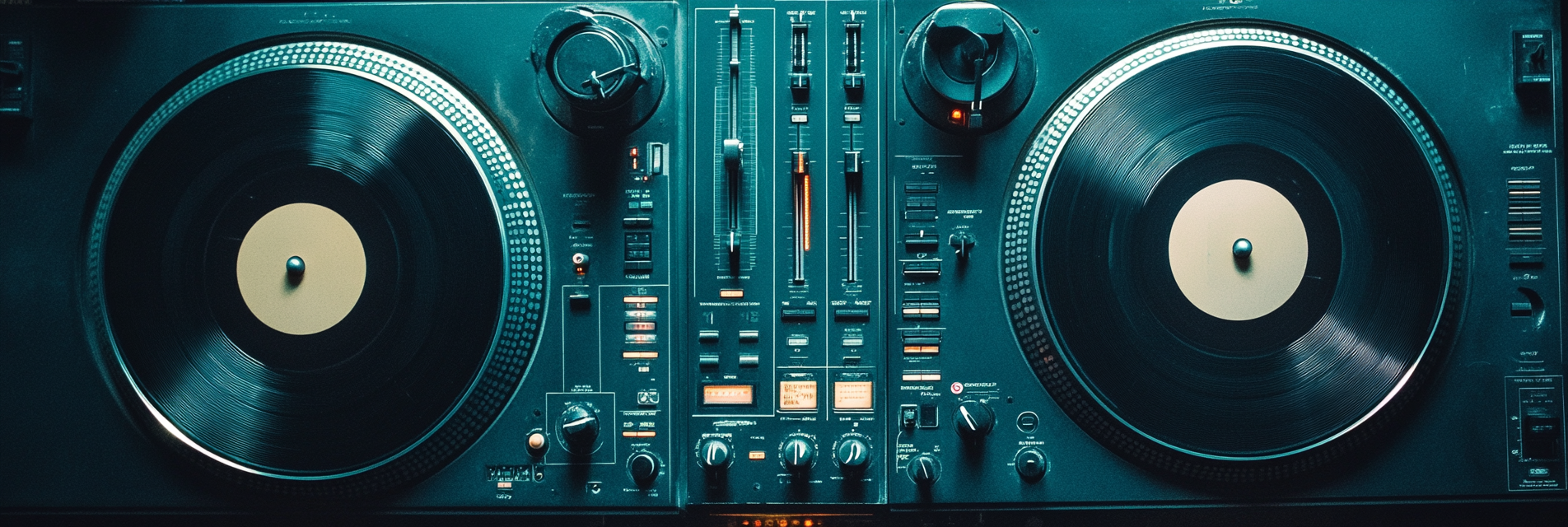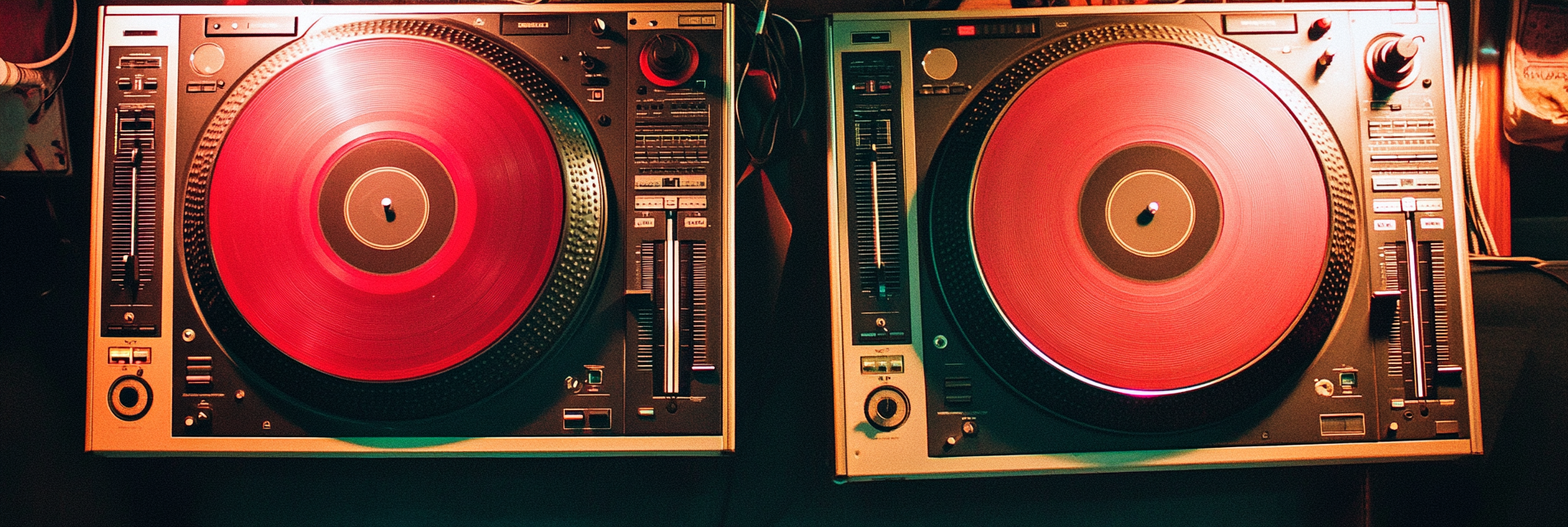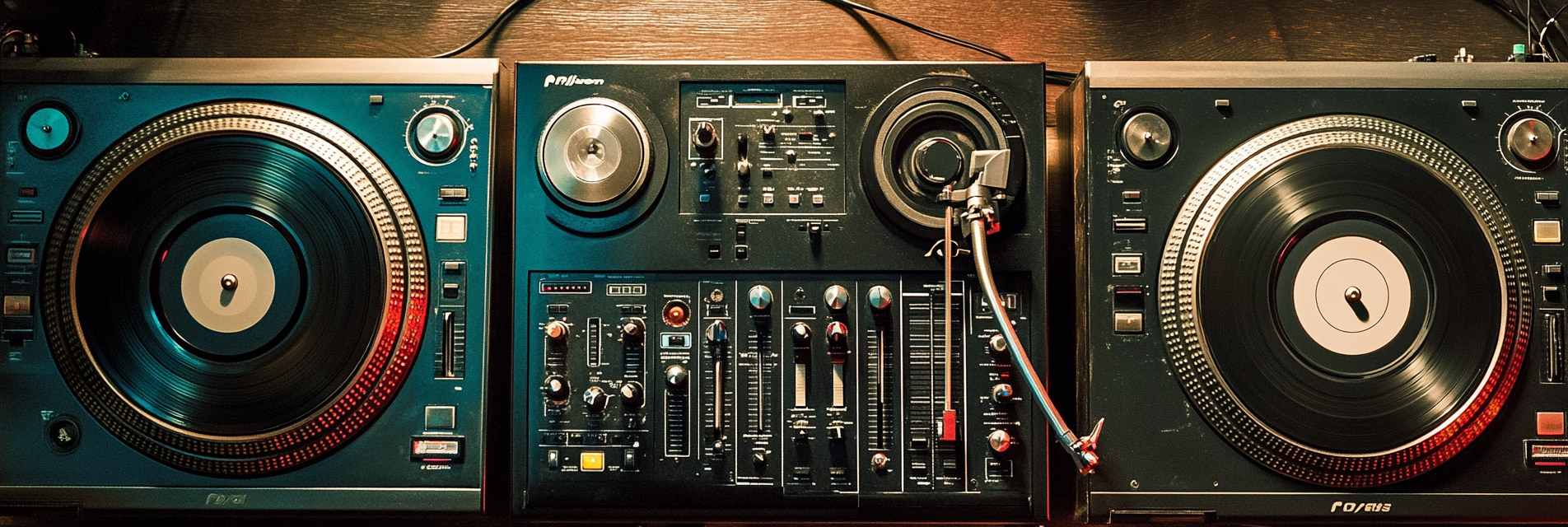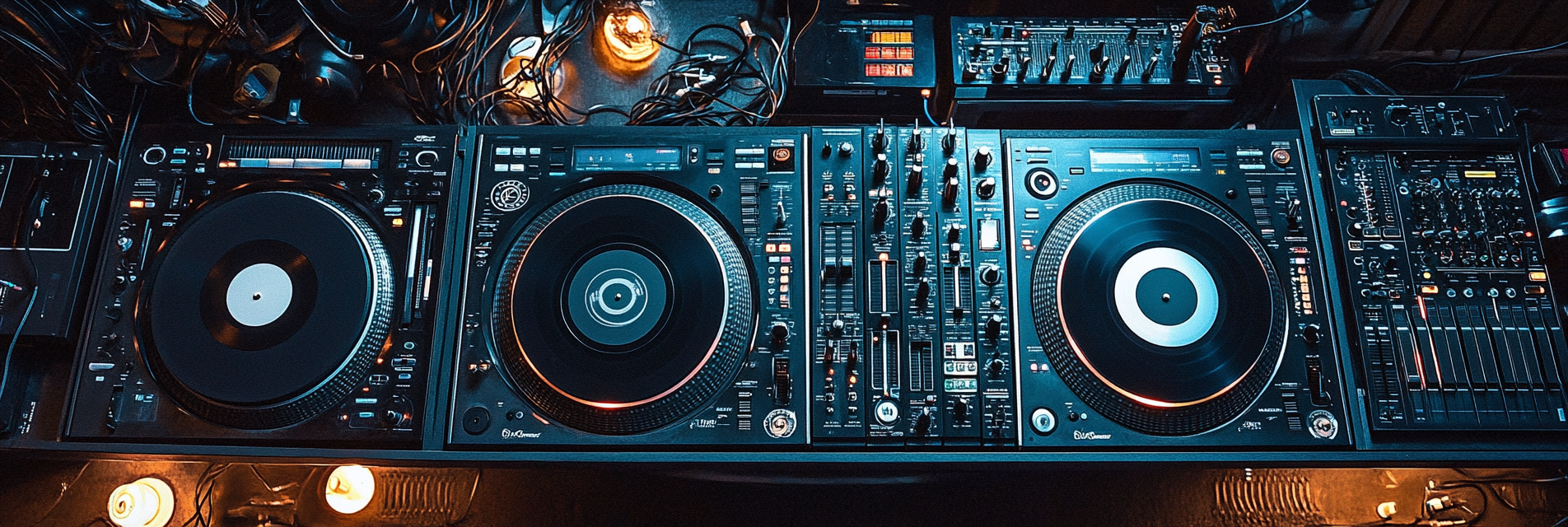
OBS Basics for Musicians: Overlays, Cameras & Screens
Getting started with Open Broadcaster Software (OBS) – adding overlays, multiple camera angles, and screen sharing for your music streams
When you're ready to level up your stream's visuals, Open Broadcaster Software (OBS) is your best friend. OBS (and similar programs like Streamlabs OBS) lets you mix multiple video and audio sources, add cool overlays, and present your live performance like a pro. The good news? You don't have to be a tech wizard to get started with the basics. In this article, we'll guide you through the OBS essentials for musicians – from setting up your scenes and cameras to incorporating overlays and even sharing your screen. By the end, you'll be able to broadcast your music with a professional touch that keeps viewers coming back.

djLooper helps you turn simple music shows into incredible performances that wow your crowd
No more stress—just pure, professional sound that makes you shine
Create your free account
Getting Started with OBS
What is OBS and Why Use It?
OBS stands for Open Broadcaster Software – a free, open-source program for streaming and recording. Unlike just hitting "Go Live" on your phone or within a platform's app, OBS lets you control every aspect of your stream. You can combine your camera feed, audio sources, images, and more into a cohesive broadcast. Musicians love OBS because it provides a studio-like control: you can balance audio levels, switch between different views (like a close-up on your guitar vs. a full frame), and add your own branding. In short, OBS is like your virtual stage crew and production team, all in one software.
Installing and Basic Setup
Start by downloading OBS from the official site (it's free for Windows, Mac, and Linux). The installation is straightforward. When you first open OBS, it might look blank or confusing – you'll see a big empty canvas. Don't worry. The first step is to create a "Scene" (OBS usually has one default scene ready). A scene is like a preset layout for your stream. By default, it's empty, so you'll need to add sources (video, audio, etc.). Before that, go into Settings (bottom-right) and enter your streaming key from your platform (YouTube, Twitch, etc.) under the Stream section. Also, in Settings > Output, choose a streaming bitrate, and in Settings > Video, set your resolution (like 720p or 1080p) and frame rate (30fps is typically fine for music). These basics set the stage for adding your content.
Adding Your Video and Audio Sources
With your scene selected, look at the Sources box in OBS (usually at the bottom). Click the '+' to add a source. For your camera, choose "Video Capture Device", give it a name (e.g., "Webcam"), and select your camera from the list. You should see your camera feed pop up on the canvas. Resize or move it if needed. Next, add your audio: if you're using an audio interface or USB mic, OBS might already be picking it up via the default audio input (check the Audio Mixer for levels). If not, click '+' in Sources and add an "Audio Input Capture", then select your interface or mic. Talk or play to see the meter moving. Now you've got the basics: your viewers can see you and hear you. You can add more sources if needed (for example, an image for a logo, or a second camera, which we'll get to).
Organizing Scenes for Different Angles or Layouts
One powerful feature of OBS is using multiple scenes. For instance, you might want one scene that's a full-screen view of you performing, another scene that shows a split-screen with you and your computer screen (if you're teaching or analyzing a song), and a third scene for a "Starting Soon" or "Be Right Back" break. You can create new scenes in the Scenes list (click '+' under Scenes). Add appropriate sources to each scene. For example, your second scene might have your webcam plus a "Window Capture" of a music software or lyrics page. Once set up, you can switch between scenes with a click (or a hotkey) and OBS will transition to the new layout. This way, you can smoothly go from chatting, to performing, to a break screen without fumbling in front of the audience.

Adding Overlays and Graphics
What Are Overlays?
Overlays are graphics or text that you place on top of your video feed. Think of a TV broadcast that shows the singer's name at the bottom of the screen or a logo in the corner – those are overlays. For your music stream, overlays could be your name or social media handle in a corner, a transparent image of your logo, or even decorative frames around your video. They make your stream look polished and branded. OBS allows you to add these easily as sources (usually as Images or Text). Having a clean overlay can also communicate info to viewers without you saying a word (like a schedule or the current song title).
Adding an Image Overlay
Let's say you have a PNG logo or banner you want on screen. In OBS, within your scene's sources, hit '+' and choose "Image". Name it (like "Logo"), then browse to find your image file. Once added, you'll see it on the preview – you can click and drag it to where you want it (say, top-left corner), and drag the corners to resize if necessary. If it's a full-screen border or frame, you may need to adjust the order of sources so your video appears in the right layer (sources at the top of the list are on top visually). Add any images you like: some streamers use overlay packs that include matching frames, bars, and icons to create a theme. Just be mindful not to overcrowd the screen; simplicity often looks more professional.
Adding Text (Song Titles, Socials)
OBS can also create text overlays. Maybe you want to display the current song title or your Instagram handle. Click '+' in sources, choose 'Text' (it might say GDI+ on Windows), give it a name (like "NowPlaying"), then a window lets you type the text and pick font, size, color, etc. Type something like "Live with [Your Name]" or leave it blank if you plan to update it on the fly later (you can always right-click the source and go to Properties to change the text mid-stream). Once your text appears on screen, position it as needed. You might put your social media @ handle at the bottom or a "Tip jar: link in bio" note. Keep text short and clear, and avoid covering important parts of the video (like your face or hands).
Using Browser Sources (Alerts & Widgets)
Many streamers use alert widgets (like a notification that pops up when someone follows or donates) or other web-based overlays (like on-screen chat or a viewer count). OBS has a 'Browser' source for these. If you have a URL from a service (for example, Streamlabs or StreamElements provide an alert box link), you can add a Browser source, paste the URL, and set the dimensions for that widget (as given by the service). This is a slightly advanced step, but it's how you'd get fancy real-time overlays like animated alerts onto your stream. If you don't want to tackle this right away, no problem – you can run a great stream without any of these extras. But it's good to know OBS can handle it when you're ready to add some flair.

Using Multiple Cameras and Angles
Adding a Second Camera
If you have more than one camera (say a webcam and a camcorder via a capture card, or even a spare smartphone using an app), OBS can incorporate both. Connect and set up your second camera. In OBS, add another 'Video Capture Device' source (e.g., name it "Camera 2") and select your second camera. Now you might see two video feeds in your scene – they could be overlapping. You can arrange them: maybe one is full-screen and the other is a smaller picture-in-picture, or you place them side by side for a split-screen. For example, you could have a close-up camera on your fretboard or keyboard while the main camera shows your face. To do a small overlay (PiP), resize the second camera source smaller and drag it to the desired corner over the main view.
Syncing Multiple Angles
When using two cameras, watch for sync issues, especially if one is via capture card (which can add a tiny delay). Usually, if you're using the same audio source for both (like one main mic), everything stays in sync. The key is to use a single audio source to avoid echo or mismatches – mute the mic on one of the camera sources if it has one, and only use your main interface or primary mic for sound. To test sync, record a quick video of you clapping or strumming in view of both cameras; watch it back to ensure the action and sound align on both feeds. OBS allows fine adjustments (you can add a slight audio/video delay in the Advanced Audio Properties if needed), but for most basic setups, it will be fine.
Switching Angles Smoothly
There are a couple of ways to switch between cameras during your stream. One method is to set up separate scenes: e.g., Scene 1 uses Camera 1 fullscreen, Scene 2 uses Camera 2 fullscreen, Scene 3 maybe uses both in a split view. Then you can switch scenes with one click or a hotkey for a smooth transition (OBS can do a quick fade or cut, which you can set in the Controls under 'Scene Transitions'). Another method, if you want to stay in one scene, is to hide/show the camera sources using the eye icon next to each source. That can be a bit manual during a performance, so many prefer the separate scenes method. Decide what feels easier for you to manage while playing. Practice hitting those switches so it becomes second nature and doesn't interrupt your flow.
Picture-in-Picture and Creative Layouts
Beyond basic switches, you can get creative with layouts. For instance, use a side-by-side layout to show two angles equally (maybe you and a bandmate, or your face and your hands if you're demonstrating something). Or have a dedicated picture-in-picture view: one camera stays small in a corner (perhaps your face cam), while the main view alternates (like different instruments or a screen share). You set these up by arranging sources within a scene as desired. Just be mindful of readability – if everything is on screen at once, make sure each element is still large enough to see. A little experimentation will help you figure out what enhances your stream versus what might be too distracting.

Screen Sharing and Advanced Tips
Sharing Your Screen or Window
Sometimes you might want to show something from your computer on stream – maybe a tutorial in your DAW, lyrics on a slide, or a music video. OBS can capture your screen or a specific window. To share your whole screen, add a 'Display Capture' source (it will show everything on a monitor). For a single program, add a 'Window Capture' and select the specific application window. Once added, that source acts like your camera did, showing whatever's on that screen or app. You can combine this with your camera in a scene (like webcam on one side, software on the other) or use it alone for full-screen demos. Remember to turn it off or switch scenes when you're done, to keep the focus on your performance when needed.
Using Studio Mode for Previews
OBS has a feature called Studio Mode (toggle it on the right side of the interface) which splits your view into a left preview and right live view. This lets you cue up and adjust a scene out of sight before showing it. For example, while your 'Performance' scene is live, you could prepare your 'Thank You' scene with a special message in the preview, then hit Transition to swap it in seamlessly. For musicians doing more complex streams (maybe setting up a quick slideshow or switching to a different layout mid-show), Studio Mode is incredibly handy. It gives you a safety net to make sure everything looks right before your audience sees it. You can absolutely stream without it, but it's nice to have as you get more advanced.
Recording Your Streams
One great thing about OBS: you can record your stream locally while you broadcast. In the Controls, there's a 'Start Recording' button separate from 'Start Streaming'. If your computer can handle it, you can record in high quality (set this in Settings > Output under Recording). This is awesome for later editing highlights, or simply keeping an archive of your performances. Just be mindful of disk space and CPU usage – recording at 1080p for an hour can create a big file and use considerable processing power. Test this out: do a short stream and record, then check the video file and ensure your stream didn't suffer. If all is well, you'll have the best of both worlds: live exposure and a saved video to reuse or share later.
Practice and Hotkeys
OBS is powerful, and with power comes a bit of a learning curve. But practice makes it easier. Before a big stream, do a private test stream or recording to rehearse using OBS – switch scenes, toggle overlays, adjust volume – so you're not doing it for the first time in front of an audience. Take advantage of hotkeys (in Settings > Hotkeys) to streamline actions: for example, set a key to switch to your close-up scene, another key to toggle your "BRB" image on/off, etc. That way, while performing, you can press one button to make changes rather than fiddling with the mouse. The more you integrate OBS into your practice, the more it becomes second nature. Soon, running the tech side will be like playing an instrument – part of the show, in sync with your performance.
djLooper helps you turn simple music shows into incredible performances that wow your crowd
No more stress—just pure, professional sound that makes you shine